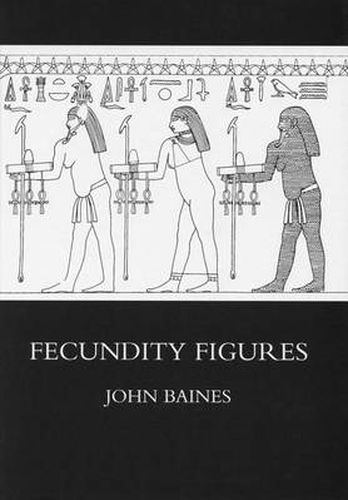Readings Newsletter
Become a Readings Member to make your shopping experience even easier.
Sign in or sign up for free!
You’re not far away from qualifying for FREE standard shipping within Australia
You’ve qualified for FREE standard shipping within Australia
The cart is loading…






Formerly known as ‘Nile gods’, fecundity figures - personifications of aspects of non-sexual fertility - have a significant role in the sophisticated iconography of ancient Egypt. In his pioneering study, first published in 1985, John Baines introduces new approaches to Egyptian art and symbolic classification through a study of this distinctive genre. Part 1 analyses the definition of Egyptian personifications, whose role has parallels in many cultures. The focus is on ‘formal’ personifications - abstractions in language that are names of deities, such as ‘Order’ or ‘Food’. Emblematic personifications are their visual counterparts, signs in the script for concepts like ‘Life’ that become actors with added human limbs. Part 2 investigates fecundity figures. Their form and its meaning are analysed, as well as the range of their names. The two principal scene types in which they occur, bringing offerings and the heraldic ‘uniting of the Two Lands’, are reviewed separately. An excursus studies the principle of artistic decorum through the distribution and compatibility of scene and figure types including emblematic personifications. This concept has been very influential in Egyptology since it was introduced in Fecundity figures. The concluding chapter reviews abnormal contexts for fecundity figures, bringing together and extending the findings of the two parts. An appendix presents and analyses the patterning of colour on fecundity figures in the context of cross-cultural issues in colour classification.
$9.00 standard shipping within Australia
FREE standard shipping within Australia for orders over $100.00
Express & International shipping calculated at checkout
Formerly known as ‘Nile gods’, fecundity figures - personifications of aspects of non-sexual fertility - have a significant role in the sophisticated iconography of ancient Egypt. In his pioneering study, first published in 1985, John Baines introduces new approaches to Egyptian art and symbolic classification through a study of this distinctive genre. Part 1 analyses the definition of Egyptian personifications, whose role has parallels in many cultures. The focus is on ‘formal’ personifications - abstractions in language that are names of deities, such as ‘Order’ or ‘Food’. Emblematic personifications are their visual counterparts, signs in the script for concepts like ‘Life’ that become actors with added human limbs. Part 2 investigates fecundity figures. Their form and its meaning are analysed, as well as the range of their names. The two principal scene types in which they occur, bringing offerings and the heraldic ‘uniting of the Two Lands’, are reviewed separately. An excursus studies the principle of artistic decorum through the distribution and compatibility of scene and figure types including emblematic personifications. This concept has been very influential in Egyptology since it was introduced in Fecundity figures. The concluding chapter reviews abnormal contexts for fecundity figures, bringing together and extending the findings of the two parts. An appendix presents and analyses the patterning of colour on fecundity figures in the context of cross-cultural issues in colour classification.